Be-YOU-tiful Adaptive Warrior

In The Beginning

As with anything new there is a learning curve. Becoming an amputee is no different. However, since few people know of anyone that’s an amputee before they, themselves, become one, there are so many questions without answers.
It seems overwhelming, confusing and quite scary.
Have no fear, even though each one of us is very different as we deal with our own amputation, we also have many similar benchmarks or stages we go through.
First thing you need to know is that you will get through this and you are going to do great. If you can embrace that mindset, a mindset of positivity, then you are already on your way to bringing that to fruition.
I believe in manifesting my own destiny and I have deep faith in my purpose and that the journey I am on was set before me by a higher power.
Speak positive and empowering words to yourself, and you will manifest positive and empowering outcomes.
After your surgery you will have time to adjust to your new body image and center of gravity, time to rest and heal, and time to prepare for what’s to come. At this point it’s a great idea to focus on getting some core strength back and balance. These things you can work on as you wait for the fitting process.
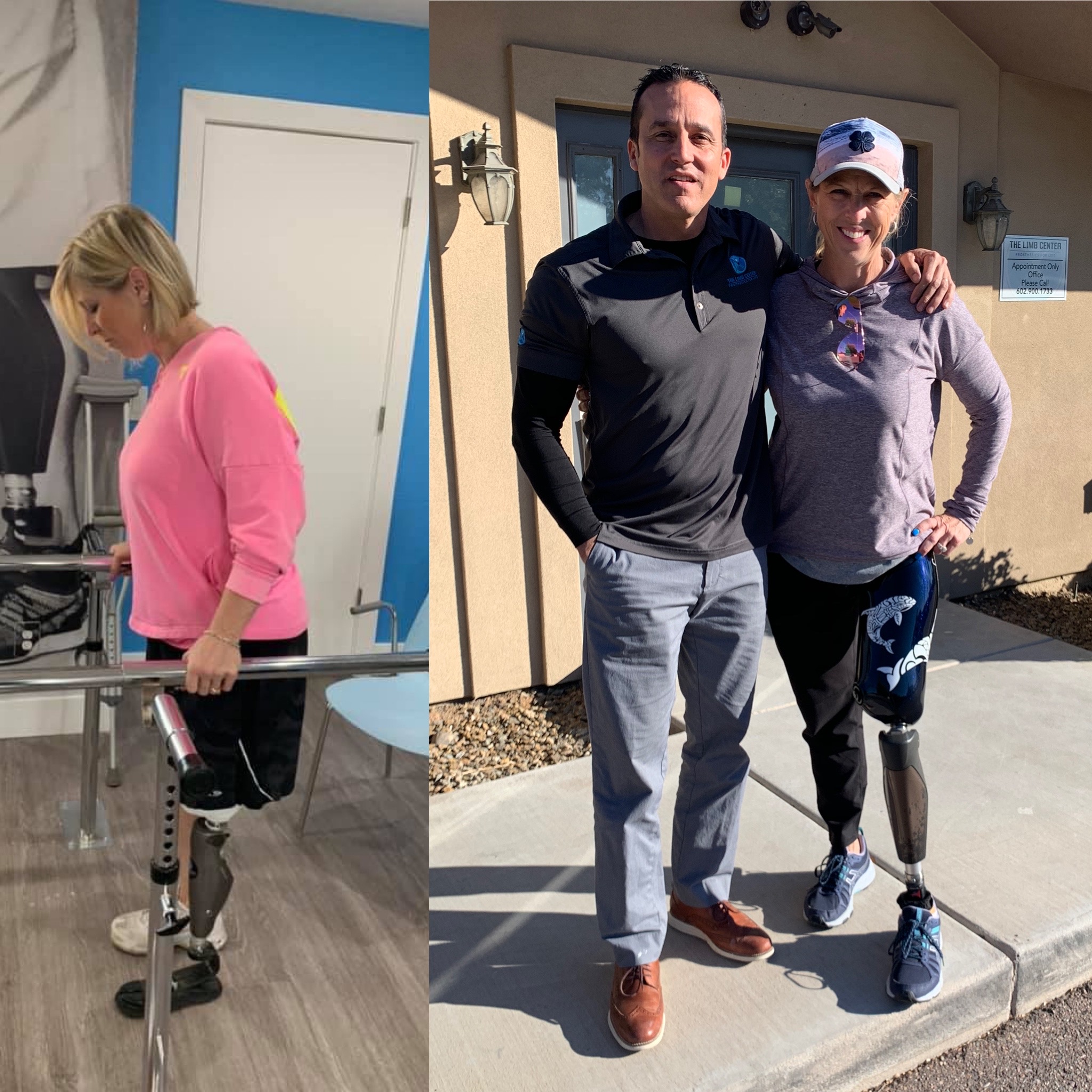 Me trying on my very first socket (L) and me a couple sockets later (R). See the weight change?
Me trying on my very first socket (L) and me a couple sockets later (R). See the weight change?
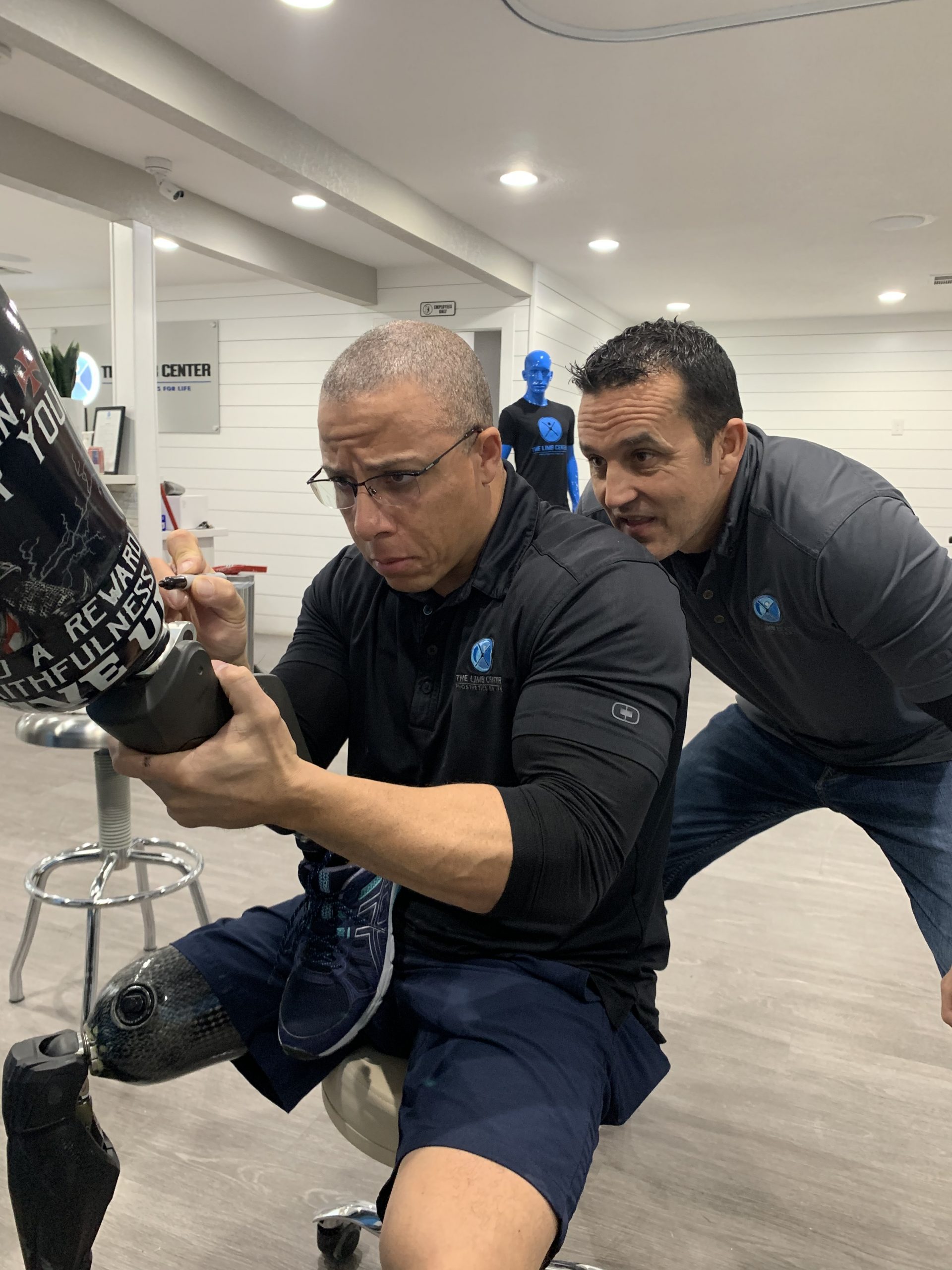
Adjustments are always being made, even when the socket feels right the leg direction can be off (too far forward leaning, not adducted enough). These things depend on your type of amputation and your hip alignment.
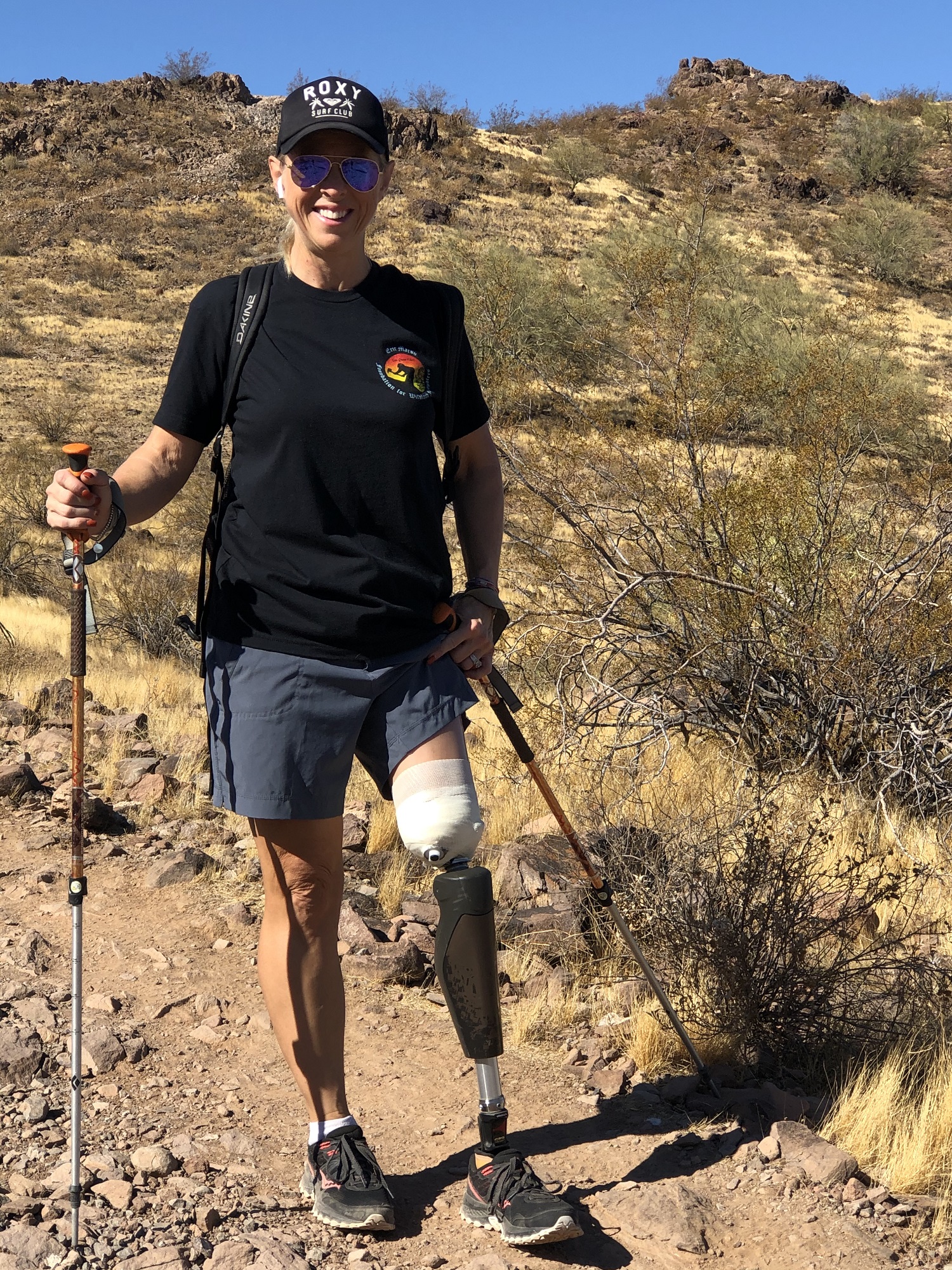
I’ve been fortunate enough to take my “test socket” home and work out in it to make sure it is made to withstand the riggers of my activity levels.
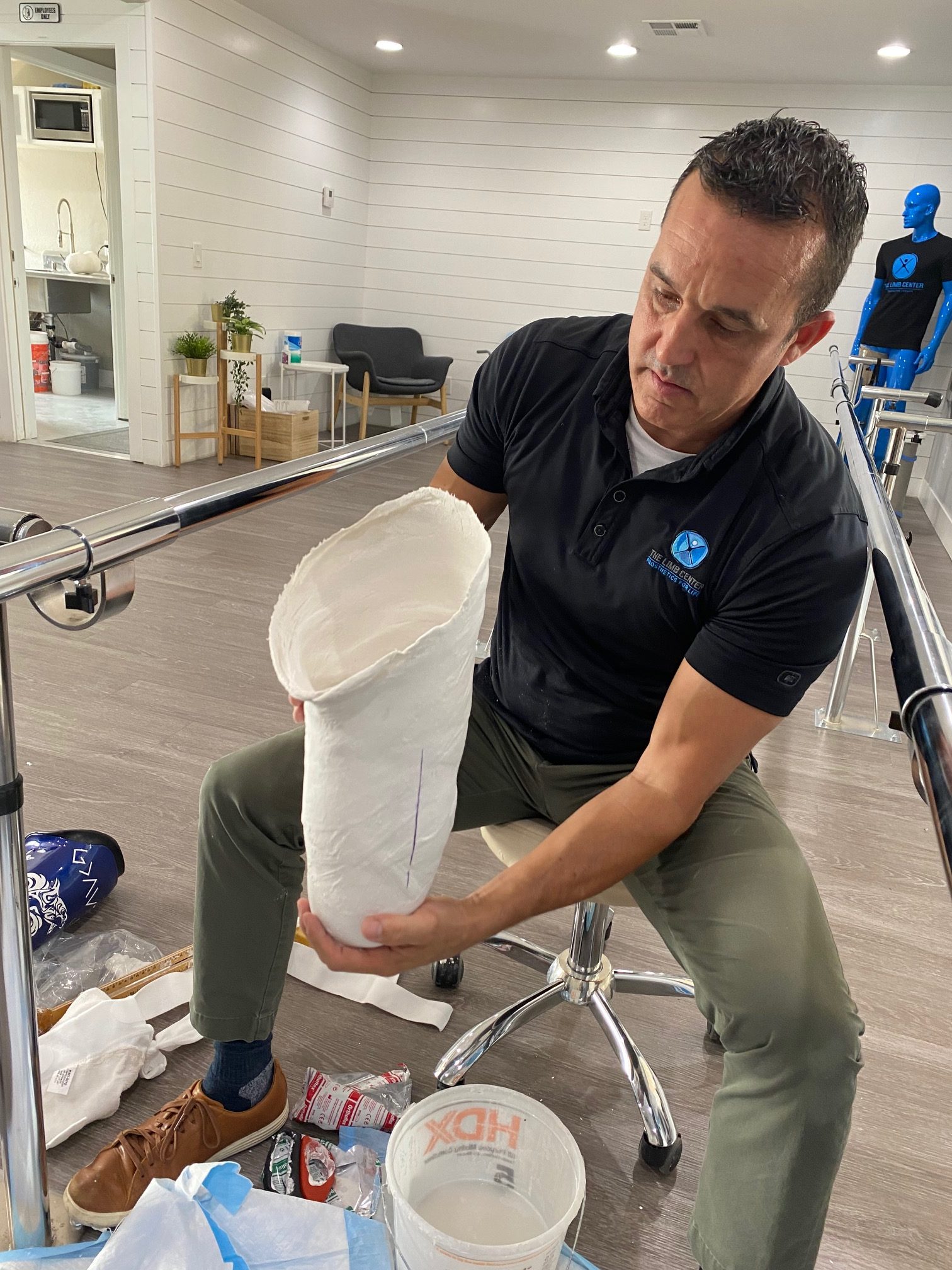
Here’s how my guy, Randy, creates my sockets. He casts my residual limb.
Once you’ve been given the green light by your surgeon that you are ready to be fitted for your prosthesis then you will head to your prosthetist’s office, discuss your goals, dreams, activity levels and where you want to be and where you see yourself in the future. This will help them fit you correctly and get you the best prosthesis for you and your goals.
Your prosthetist will create a “test socket” for you-this could take a couple of weeks- and then you will go in, try it on, walk around in it and they will adjust it for a more comfortable fit, then off you go with your brand new leg.
PT should begin at this point, if you haven’t already been working with one to gain core strength and balance.
I know this can be scary and you might feel apprehensive at first but remember, they want to help you succeed at walking and using your prosthesis correctly so you don’t hurt yourself.
Communicate with them, let them know what feels good and doesn’t feel good, what scares you, what you don’t understand, and what you want to be able to do. Discuss your dreams and goals with them.
Now as you start using your new leg you will start noticing changes in your volume of your leg. The more you start doing life again the more your volume of your residual limb will change and then you run into the frustrating aspect of being an amputee, the socket fit.
You can literally get a brand new socket made to fit your leg perfectly and the very next day it won’t feel as snug. You’ll start to add socks on top of your liner, one after the next, just to accommodate your leg shrinking in size. The more socks you use the less connected you will feel and then you won’t trust your prosthesis to stay in place and behave the way it should.
But don’t worry, your prosthetist will be taking measurements and once those measurements align with your insurance company’s guidelines you can be fitted for a new socket.
The problem?
It is the whole process all over again!
You get a new casting of your limb (some cast, some use digital renderings, just depends on what they like to use), they create a new “test socket” and adjust it to fit nice and snug. Next they create a new final socket and you go back in, try it on, walk around, make adjustments and then you’re on your way…..until this one begins to fit poorly.
The reality: the first 2-3 years are a series of nicely fitting socket, loosening, refitting, recreating, and then all over again.
I, myself, went through 16 sockets in the first 3 years!
The sooner you know and understand this sequence of events, the better it is for you to mentally grasp the journey so these moments don’t gut punch you and make you feel like a failure, or that you’re doing something wrong, or that this is heading down an irreversible path.
Embrace this journey. It is unique and challenging, but you will learn so much about yourself and build so much character, and experience, so quickly.
No one has the same experiences as they become an amputee but this is a basic outline of some pretty typical moments you will see to some degree.
Just remember you are stronger than you think and you will make it through this.

Plain and simple, this week I want you to face those fears.
I know you and see you. You are getting ready to head into your first physical therapy and have no idea how you will manage. You are worried you won’t be able to tolerate the leg, that you aren’t strong enough or even brave enough for this life….but you are!
As I tell myself when I encounter something that puts fear into my heart and doubt into my brain, “One step at a time, Ang”.
I can do anything, one step at a time.
One Step At A Time. Yes, that can be a metaphor, but I mean it literally.
You will NOT be asked to do stairs on your first day of PT, nor will they ask you to try running.
Baby steps is how you start. Just as a small child learns to crawl before they stand, stand before they walk, and walk before they run, you too, will go through these sort of “baby steps”. You are doing something for the first time. It takes, strength, balance, mobility, and practice to get it right, and even then you still won’t have it down. I still catch myself not walking with a good gait and making corrections. That’s ok, it takes time.
Enjoy the journey.
Embrace what scares you and make the most of these moments.
You can do this, look how far you’ve already come!
Have a blessed week and get after it!
Rise up, Warrior, rise up!
And as always,
Be Healthy,
Be Happy,
Be YOU!!
Much love,

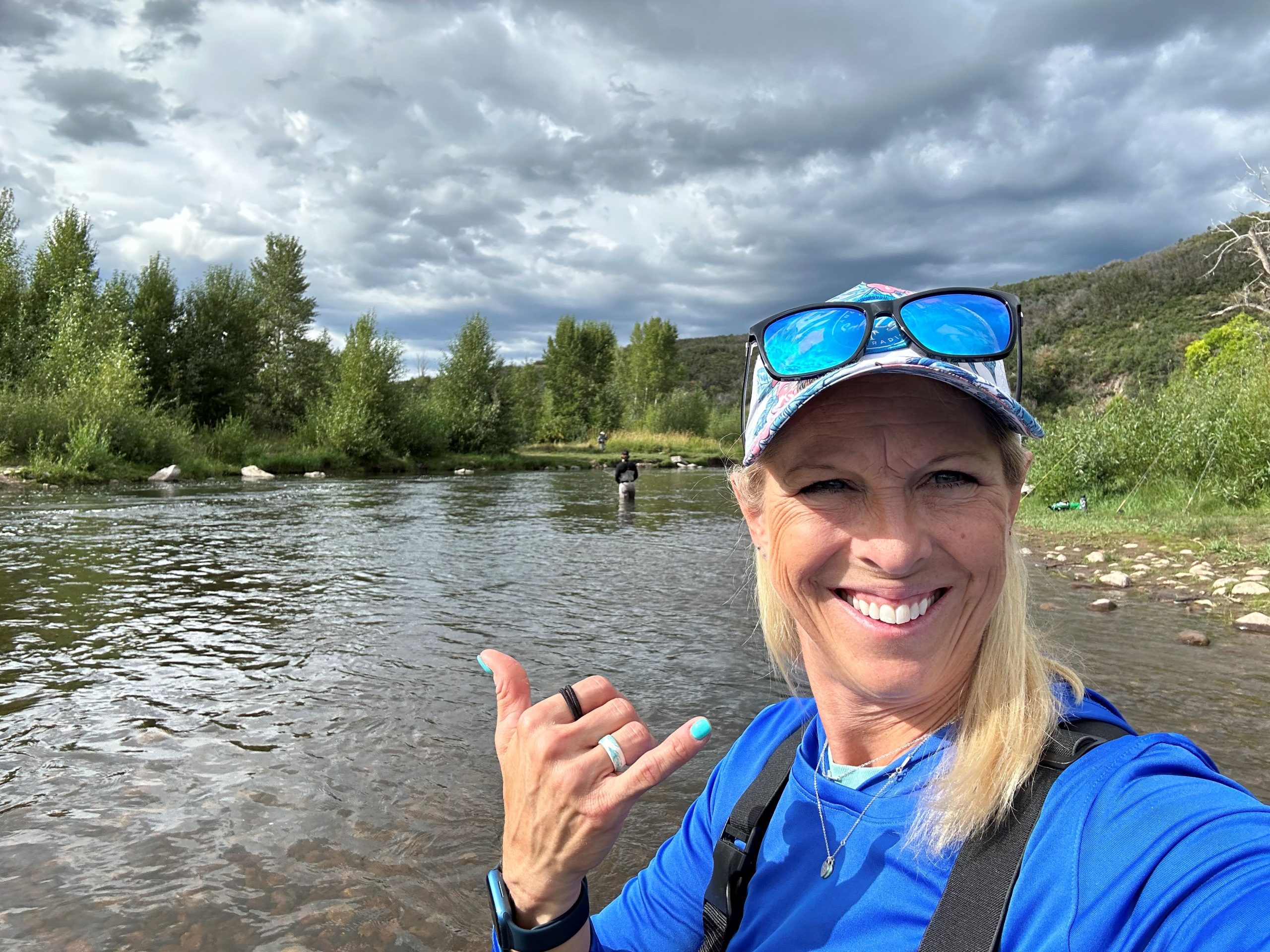






 Visit Podcast Website
Visit Podcast Website RSS Podcast Feed
RSS Podcast Feed Subscribe
Subscribe
 Add to MyCast
Add to MyCast